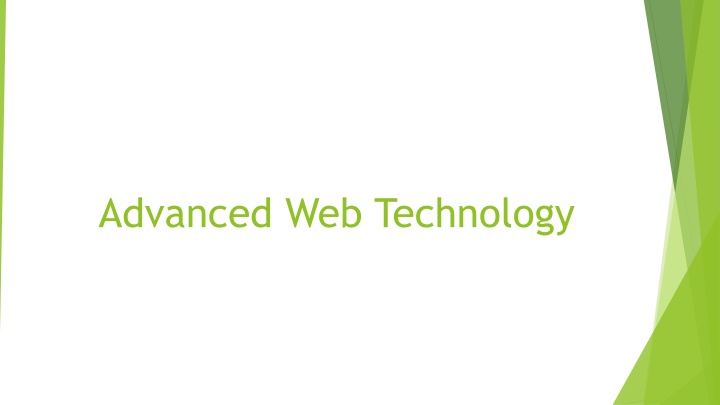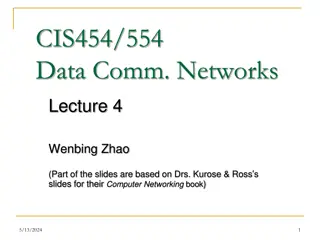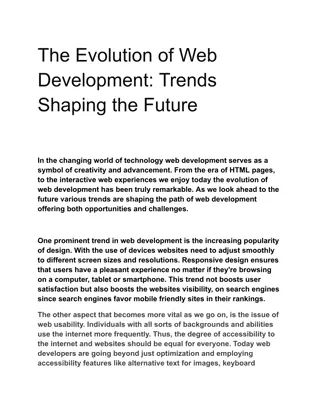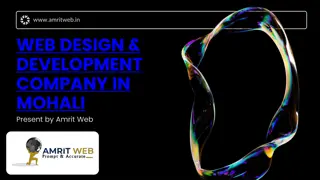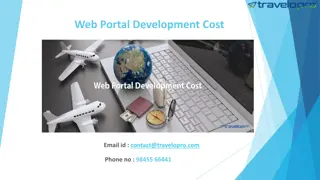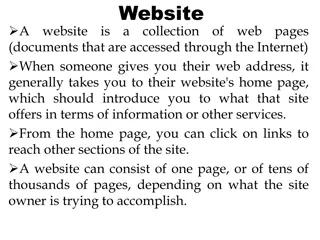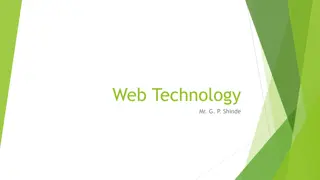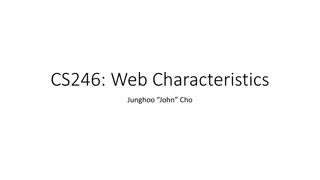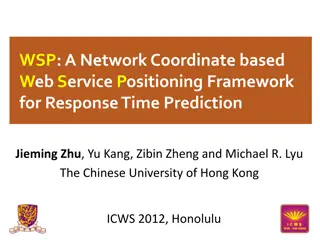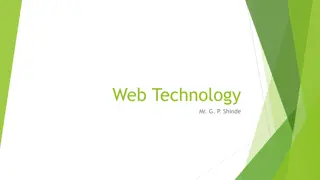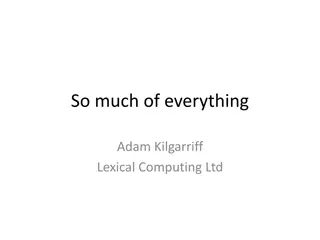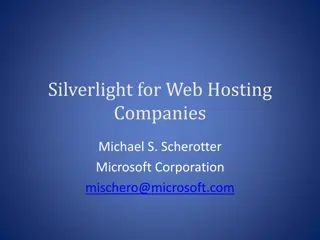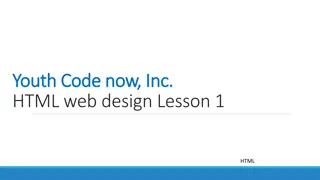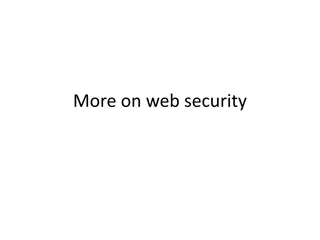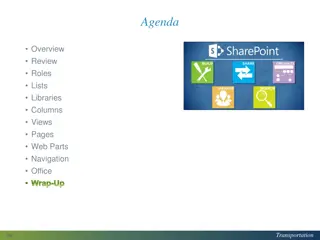Advanced Web Technology
"Discover the evolution from Web 1.0 to Web 2.0, including rich Internet applications, Web-oriented architecture, and social web interactions. Learn about the collaborative features and technologies that define the second generation of web services."
Download Presentation

Please find below an Image/Link to download the presentation.
The content on the website is provided AS IS for your information and personal use only. It may not be sold, licensed, or shared on other websites without obtaining consent from the author.If you encounter any issues during the download, it is possible that the publisher has removed the file from their server.
You are allowed to download the files provided on this website for personal or commercial use, subject to the condition that they are used lawfully. All files are the property of their respective owners.
The content on the website is provided AS IS for your information and personal use only. It may not be sold, licensed, or shared on other websites without obtaining consent from the author.
E N D
Presentation Transcript
Advance Web Technology Wikipedia Facebook YouTube Flickr
What is Web 2.0? It is Second generation of services available on the Web that lets people collaborate and share information online O'Reilly Media and MediaLive International popularized the term Google is now seen as the torch bearer of the term by the media From a technology perspective Web 2.0 uses AJAX, Mashups and RSS predominantly
Web 2.0: Evolution Towards a Read/Write Platform: Web 1.0 (1993-2003) Pretty much HTML pages viewed through a browser Web 2.0 (2003- beyond) Web pages, plus a lot of other content shared over the web, with more interactivity; more like an application than a page Write & Contribute Post / record dynamic Browsers, RSS Readers, anything Web Services Everyone mass amatuerization Read Page static Web browser Client Server Web Coders geeks Mode Primary Unit of content State Viewed through Architecture Content Created by Domain of
Web 1.0 Web 2.0 DoubleClick Google AdSense Ofoto Flickr Akamai BitTorrent mp3.com Napster Britannica Online Wikipedia personal websites blogging evite upcoming.org and EVDB domain name speculation search engine optimization page views cost per click screen scraping web services publishing participation content management systems wikis directories (taxonomy) tagging ("folksonomy") stickiness syndication
Web 2.0 Concepts Web 2.0 can be described in three parts: Rich Internet application (RIA) defines the experience brought from desktop to browser whether it is from a graphical point of view or usability point of view. Web-oriented architecture (WOA) is a key piece in Web 2.0, which defines how Web 2.0 applications expose their functionality so that other applications can leverage and integrate the functionality providing a set of much richer applications. Examples are feeds, RSS, Web Services, mash-ups. Social Web defines how Web 2.0 tends to interact much more with the end user and make the end-user an integral part.
Web 3.0 (Not Exists) Web 3.0 is one of the terms used to describe the evolutionary stage of the Web that follows Web 2.0. Given that technical and social possibilities identified in this latter term are yet to be fully realized the nature of defining Web 3.0 is highly speculative. In general it refers to aspects of the Internet which, though potentially possible, are not technically or practically feasible at this time.
Rich Internet Application Development A rich Internet application (RIA) sometimes called an Installable Internet Application, Is a Web application that has many of the characteristics of desktop application software, Typically delivered by way of a site-specific browser, A browser plug-in, an independent sandbox, extensive use of JavaScript, or a virtual machine. Adobe Flash, JavaFX, and Microsoft Silverlight are currently the three most common platforms
AJAX Ajax is not a technology in itself Shorthand for Asynchronous JavaScript and XML The term was first used by Adaptive Path only in Feb 2005 Removes the need to reload entire web page each time the user makes a change. Increase the web page's interactivity, speed, and usability. XML is used as the format for transferring data between the server and client. XML files may be created dynamically by some form of server-side scripting The Ajax technique uses a combination of: XHTML and CSS, JavaScript, XMLHttpRequest /IFrame object
AJAX Frameworks Prototype Library, DWR JAVA AJAX Frameworks
List of Ajax frameworks frameworks JQuery MooTools Prototype YUI Library ASP.NET AJAX Spry framework (no longer) Dojo Toolkit License GPL and MIT MIT MIT BSD Microsoft Public License MIT modified BSD license or the Academic Free License GPLv3 or proprietary MIT MIT Ext JS Backbone.js AngularJS
Frameworks in Java for server-side Ajax operations 1. Apache Wicket: An open-source Java server- centric framework supporting Ajax development 2. AribaWeb: An open-source framework with Reflection and Object-Relational mapping 3. Backbase: Enterprise Ajax for JSF 4. DWR Direct Web Remoting 5. Echo for Ajax servlets 6. FormEngine: A framework for easy creation of dynamic forms 7. Google Web Toolkit: A widget library with a Java to JavaScript compiler 8. ItsNat: A server-side Java framework focused on single-page interface applications 9. JackBe: Enterprise Ajax framework 10.JSF: Java Server Faces 11.OpenXava: Model-driven framework for creating Ajax business applications 12.RAP: Eclipse Rich Ajax Platform 13.JBoss RichFaces, ICEfaces and PrimeFaces: Open-source Ajax component libraries for JavaServer Faces 14.Tersus: An open-source platform for developing rich web applications by visual programming 15.Vaadin: A server-side Java widget framework utilizing GWT 16.ZK: An open-source Java server + client fusion Ajax framework utilizing jQuery and XUL
Prototype Library Prototype takes the complexity out of client-side web programming. Built to solve real-world problems, It adds useful extensions to the browser scripting environment and provides elegant APIs around the clumsy interfaces of Ajax and the Document Object Model To learn how to use it just visit http://prototypejs.org/learn/
DWR JAVA AJAX Framework The DWR project was started by Joe Walker in 2004, 1.0 released at 29 Aug 2005. DWR, or Direct Web Remoting, is a Java open source library that helps developers write web sites that include Ajax technology. It allows code in a web browser to use Java functions running on a web server as if those functions were within the browser. It consists of two main parts: Code to allow JavaScript to retrieve data from a servlet-based web server using Ajax principles. A JavaScript library that makes it easier for the web site developer to dynamically update the web page with the retrieved data.
DWR features DWR has a number of features like Call batching, Marshalling of virtually any data-structure between Java and Javascript (including binary file uploading and downloading), Exception handling, Advanced CSRF protection and Deep integration with several Java server-side technologies like Spring and Guice.
Getting Started with DWR http://directwebremoting.org/dwr/introduction/getting-started.html
